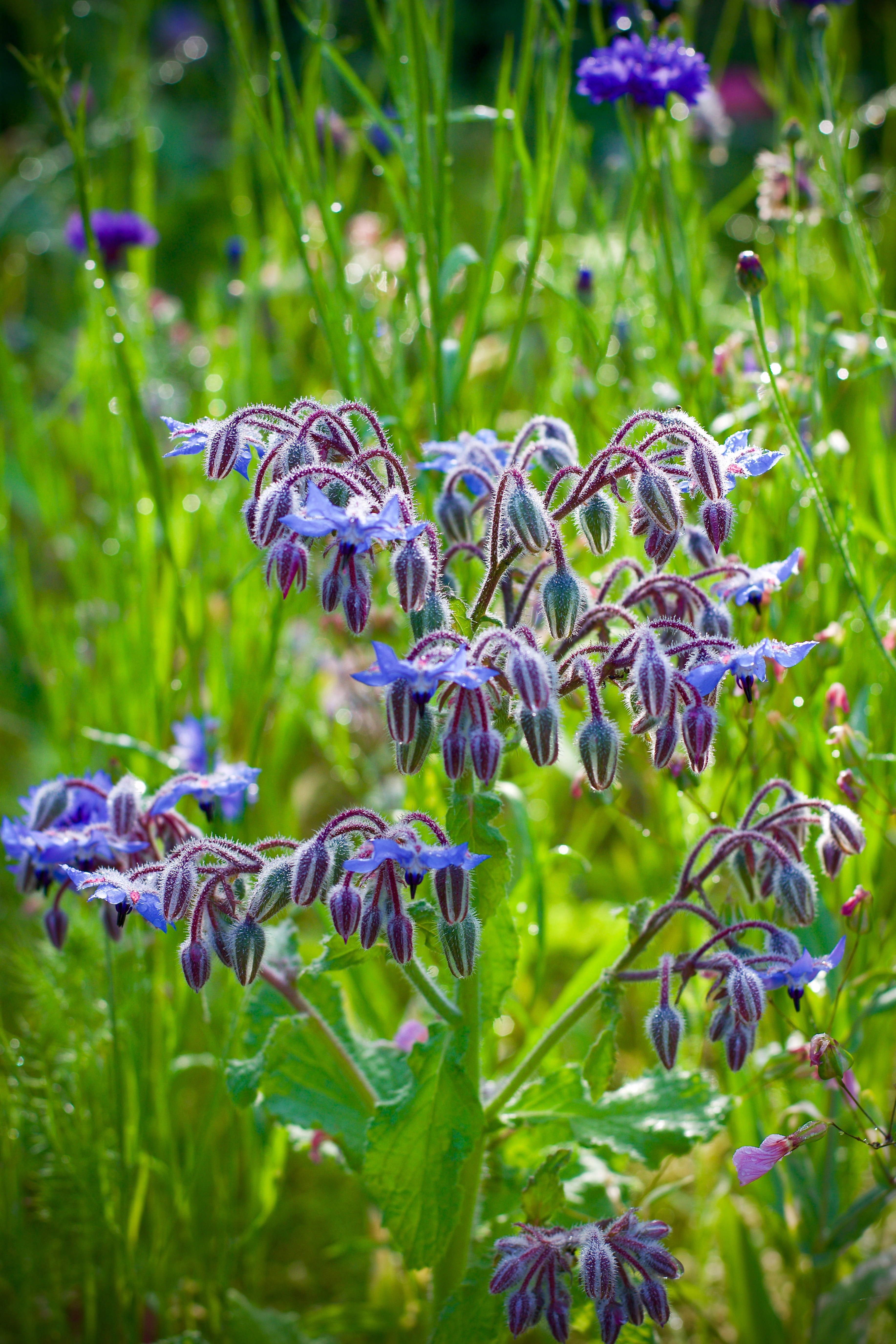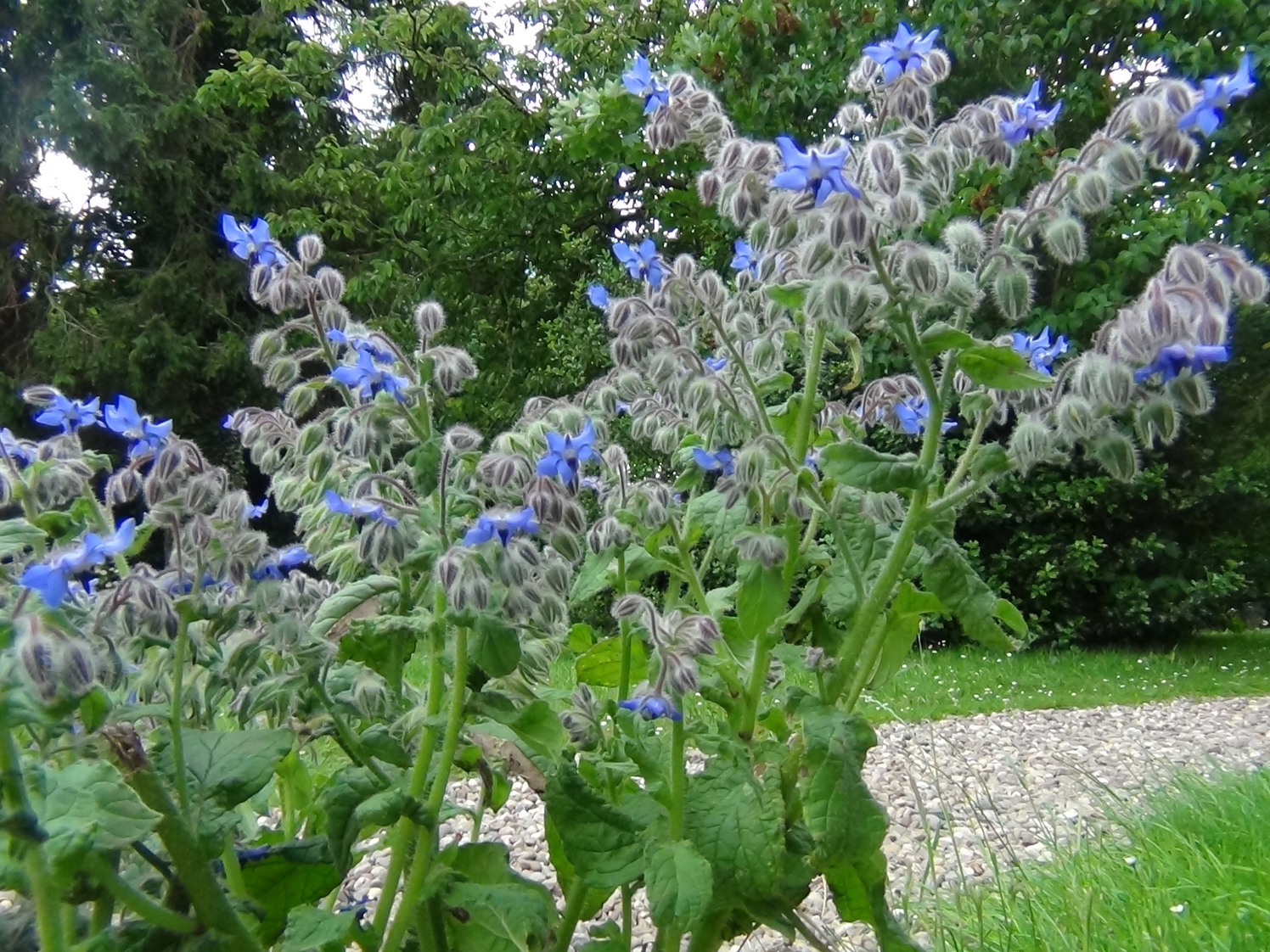
Borage Plant
Borage Plant: A Comprehensive Guide
Introduction
Borage plant, also known as Borago officinalis, is a popular herb with a rich history of culinary and medicinal uses. This plant is native to the Mediterranean region but is now grown in various parts of the world. Borage is known for its vibrant blue flowers and hairy leaves, which are not only aesthetically pleasing but also have numerous health benefits. In this article, we will explore the various aspects of the borage plant, including its uses, benefits, and cultivation.
Botanical Description
Borage is an annual herb that belongs to the Boraginaceae family. It typically grows to a height of 2-3 feet and has a sprawling growth habit. The plant has hairy stems, leaves, and flowers, which give it a rough texture. The leaves are oval-shaped and alternate on the stem, while the flowers are star-shaped and bright blue in color. Borage plants also produce small black seeds that are rich in oil.
Culinary Uses
Borage has a long history of use in culinary applications. The leaves and flowers of the plant are edible and have a mild cucumber-like flavor. They can be used fresh in salads, soups, and drinks or dried and used as a seasoning. Borage flowers are also commonly used as a garnish in dishes to add a pop of color. Additionally, borage leaves can be infused in vinegar or oil to create flavored dressings.
Medicinal Benefits

Borage is revered for its medicinal properties and has been used in traditional medicine for centuries. The plant is rich in essential fatty acids, including gamma-linolenic acid (GLA), which has anti-inflammatory properties. Borage oil is often used as a supplement to treat various conditions, such as arthritis, eczema, and menopausal symptoms. In addition, borage tea is believed to have diuretic and anti-inflammatory effects.
Health Benefits
In addition to its medicinal properties, borage offers a range of health benefits. The plant is packed with nutrients, including vitamins A and C, potassium, and calcium. These nutrients support overall health and well-being, boost the immune system, and promote healthy skin. Borage is also known for its antioxidant properties, which help protect the body from oxidative stress and reduce the risk of chronic diseases.
Beauty Uses
Borage is not only beneficial for internal health but also for external beauty. The oil extracted from borage seeds is commonly used in skincare products for its moisturizing and anti-aging properties. Borage oil is rich in fatty acids that nourish and hydrate the skin, promote collagen production, and reduce the appearance of fine lines and wrinkles. It is also used to treat skin conditions such as acne, eczema, and psoriasis.
Cultivation

Borage is a hardy plant that is easy to grow in a variety of climates. It thrives in full sun and well-drained soil, but can also tolerate partial shade. Borage seeds can be sown directly in the garden in spring or fall and will germinate within 7-14 days. The plant requires regular watering, especially during dry periods, but is relatively low-maintenance. Borage can self-seed and spread easily, so it is important to monitor its growth and control its spread if necessary.
Harvesting
Borage leaves and flowers can be harvested throughout the growing season. The leaves are best harvested when young and tender, as they become tough and bitter as they mature. The flowers should be picked when fully open to ensure optimal flavor and color. To harvest borage seeds, allow the flowers to dry on the plant and then collect the seeds once they have matured. The seeds can be stored in a cool, dry place for future use.
Storage
Borage leaves can be stored fresh in the refrigerator for up to a week or dried for long-term storage. To dry borage leaves, hang them in a well-ventilated area out of direct sunlight until they are crispy. Once dried, store the leaves in an airtight container away from heat and moisture. Borage flowers can be dried by spreading them on a clean cloth in a single layer and allowing them to air dry. Store the dried flowers in a sealed container in a cool, dark place.
FAQs
Q: Is borage safe for consumption?
A: Yes, borage is safe for consumption when consumed in moderate amounts. However, pregnant women and individuals with liver or kidney conditions should consult a healthcare professional before using borage.
Q: Can borage be grown indoors?
A: Yes, borage can be grown indoors in containers as long as it receives sufficient sunlight and water. It is important to provide adequate drainage and space for the plant to grow.
Q: How can borage be used in cooking?
A: Borage leaves and flowers can be used fresh in salads, soups, and drinks, or dried and used as a seasoning. The flowers can also be used as a garnish in dishes.
Conclusion
In conclusion, borage plant is a versatile herb with a wide range of uses and benefits. From culinary and medicinal applications to skincare and beauty uses, borage offers something for everyone. By growing and incorporating borage into your daily routine, you can enjoy the numerous health benefits and flavors that this remarkable plant has to offer. So why not give borage a try and experience its wonders for yourself?